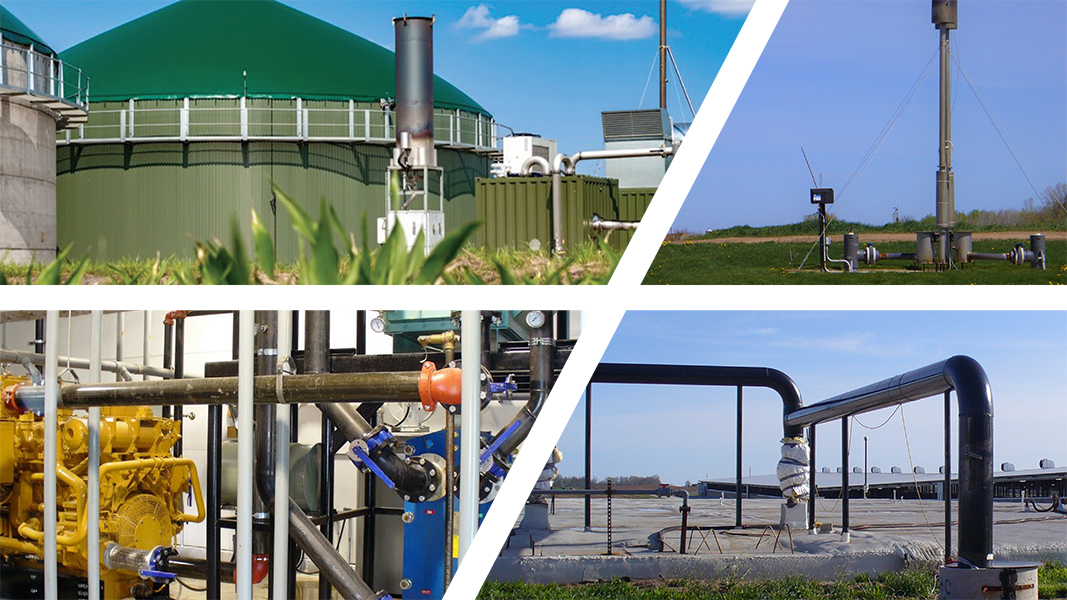 The U.S. EPA AgSTAR program released its Anaerobic Digester/Biogas System Operator Guidebook in November, a comprehensive technical resource offering best practice guidance related to the operation and maintenance (O&M) of anaerobic digestion (AD)/biogas systems. The Guidebook covers topics for a wide range of stakeholders, including but not limited to AD/biogas system owners, managers, and operators. Fundamental questions about system components, process parameters, and O&M procedures are answered to help operators maximize profitability by optimizing biogas yield, improving biogas quality, and improving operating uptime, all while minimizing expenses. “This Operator Guidebook is not intended to serve as a fully comprehensive stand-alone reference guide, provide regulatory guidance, or take the place of a site-specific O&M manual, but rather to serve as a complement to these essential resources,” notes AgSTAR.
The U.S. EPA AgSTAR program released its Anaerobic Digester/Biogas System Operator Guidebook in November, a comprehensive technical resource offering best practice guidance related to the operation and maintenance (O&M) of anaerobic digestion (AD)/biogas systems. The Guidebook covers topics for a wide range of stakeholders, including but not limited to AD/biogas system owners, managers, and operators. Fundamental questions about system components, process parameters, and O&M procedures are answered to help operators maximize profitability by optimizing biogas yield, improving biogas quality, and improving operating uptime, all while minimizing expenses. “This Operator Guidebook is not intended to serve as a fully comprehensive stand-alone reference guide, provide regulatory guidance, or take the place of a site-specific O&M manual, but rather to serve as a complement to these essential resources,” notes AgSTAR.
Chapters get into details about process control, laboratory testing and data recording, the integrated conveyance network of pumps and pipes (with excellent graphics), biogas handling and conveyance as well as biogas conditioning technologies, odor control, inspection and maintenance, and the all important topic of safety. In the Process Control chapter, a section titled “Digester Loading Risks” captures essential insights into core operations’ fundamentals: “… When a digester fails because of unbalanced microbiological conditions, it must be emptied and restarted. The main causes for upset conditions are an increase in organic loading rate (OLR), [feeding], or a drastic change in feedstock composition. Such changes cause an OLR spike that allows the acidogenic bacteria to exceed the growth rate of the methanogenic bacteria, lowering the digester’s pH. A second cause would be the introduction of toxic elements. This would likely result in a more rapid system death than an overfeeding situation.
“A digester will give several ‘warning signs’ or indications as performance decreases and before catastrophic failure. The first indicator is a reduction in the methane concentration of the biogas. … A second early indicator of digester health is the digestate’s total alkalinity content. A digester may be experiencing an upset condition when the alkalinity decreases; pH is often used as a health indicator. However, because changes in pH happen over a longer time period than changes in alkalinity, pH testing does not give an early warning of an upset condition. Other digester heath indicators are a rise in the concentration of volatile fatty acids (VFAs) and the ratio between VFAs and alkalinity. … A sudden, rapid increase in organic loading may cause solids to float on the digester surface and trap air, leading to the collection of foam on the digester surface.”
AgSTAR is hosting an Operator Guidebook Webinar on December 15 (1:00 PM-2:00 PM Eastern) for a discussion about the Guidebook. The webinar will focus on Safety, Operations & Maintenance, and Biogas Conveyance & Upgrading, with time for Q&A.













